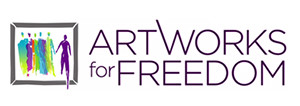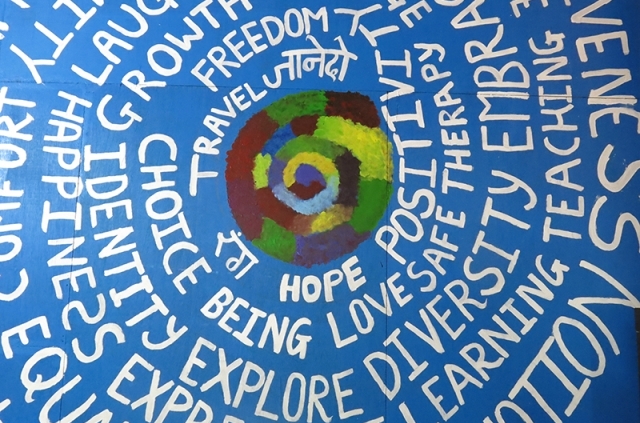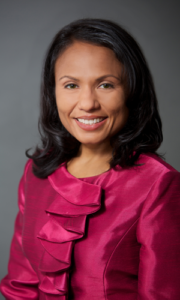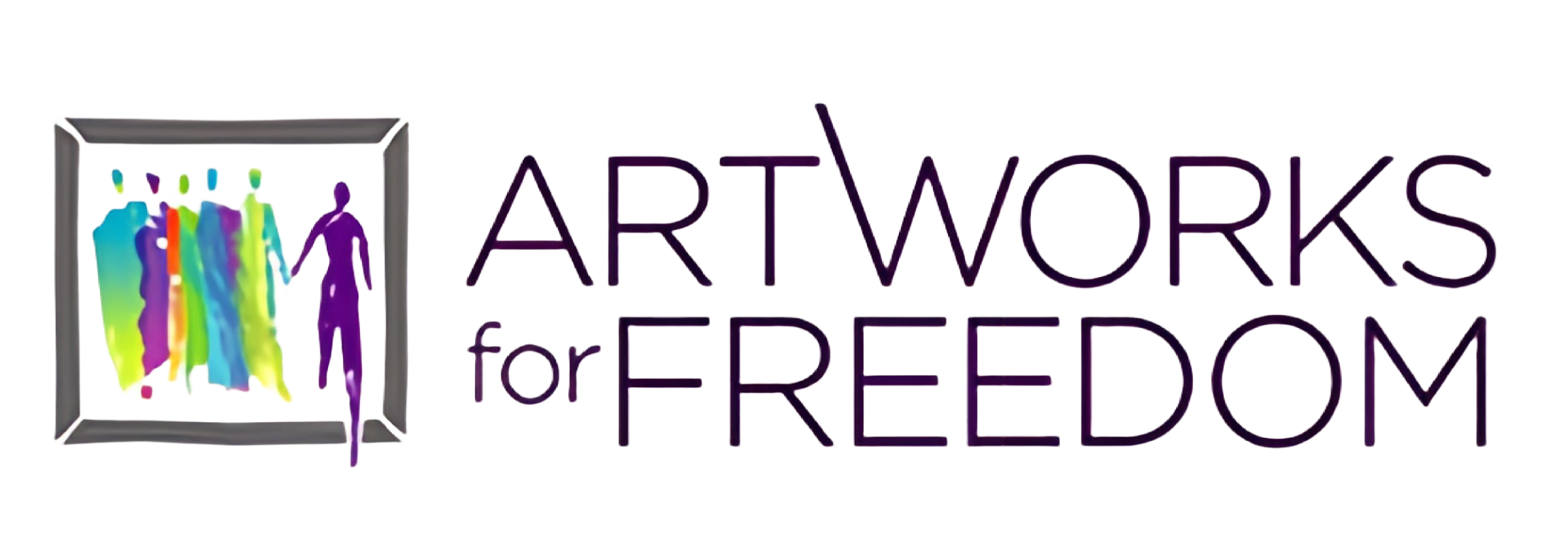Huffington Post recently published an article questioning the effectiveness of human trafficking awareness campaigns. While it makes certain valid points about the sensationalized nature of some campaigns, the notion that raising awareness fails to combat human trafficking is flat-out wrong.
Yes, the public can be exposed to overly dramatized versions of the issue; however, not all public awareness campaigns use sensationalized messages. ArtWorks for Freedom, for example, raises awareness by telling authentic stories from trafficking survivors through the arts. We empower survivors and share their experiences without appealing to people’s voyeuristic instincts. Our bio states, “Through the artistic retelling of survivors’ stories, we amplify their voices, concretize their experiences and create communities of awareness to stand against this debasement of our common humanity.”
When done in an authentic and informative way, raising awareness is the first step to preventing human trafficking.
Awareness campaigns must portray trafficking with accuracy. As the article states, an image of a bound, white female child is not a precise depiction of what trafficking looks like. While trafficking can take place in any community, people of color are particularly vulnerable. In addition, traffickers not only use force to control their victims, but also fraud and coercion. Psychological captivity does not necessarily mean physical confinement; therefore, portrayals of bound victims are not typical.
It is also important to understand different types of trafficking and their prevalence. Public awareness campaigns tend to focus on sex trafficking and exclude labor trafficking— the most common form of trafficking worldwide.
All forms of trafficking are about the same thing: the powerlessness of victims, the greed of traffickers.
In order to eradicate trafficking as a whole, we must draw awareness to all types, including labor trafficking. We can help end labor trafficking through our consumer choices. Awareness is fundamental to making these changes. Was the Bangladeshi woman who made your shirt paid a fair wage? What conditions were the Southeast Asian fishermen working in so you could have that cheap shrimp on your plate? How are the janitorial workers in your hotel or the aides in your grandparents’ elder care facility being treated? How many slaves work for you?
To make change, we have to have an informed understanding of the problem. This understanding begins with awareness.
Like the article says, rescue is not enough. There are systemic issues at play that must be addressed. Factors like homelessness, unemployment, health issues, and lack of opportunity marginalize people, not only making them more vulnerable to trafficking, but also impeding their recovery after rescue. We must think about victims’ long-term needs, which vary depending on the circumstances. Housing, for example, is a major concern for trafficking survivors, regardless of age. Minors have to navigate the foster care system and other placements, while adults need transitional and permanent living situations.
Unemployment is another obstacle. Trafficking victims often struggle to find economically sustainable jobs, facing stigmatization, resistance, and lack of opportunity as a result of their exploitation. Insufficient educational background can hinder the employment process as well. Employment programs do exist for survivors, but they often lack sufficient funding.
Stable employment is crucial to recovery and reintegration.
Health presents another set of challenges for trafficking victims. Physical health issues can include infectious diseases, chronic illnesses, various conditions, and pervasive injuries. Not to mention the coronavirus global pandemic. Mental health issues present in a variety of ways, including anxiety, depression, addiction, and post-traumatic stress disorder. In order to process trauma, victims require support through counseling, psychotherapy, peer-engagement, and residential programming.
Healthcare must be accessible.
We have another problem in our country: our laws tend to criminalize the victims. Under threat of violence from pimps or unscrupulous labor contractors, trafficked individuals sometimes are forced to commit crimes and are thus treated by law enforcement as criminals, not victims. They are punished for crimes they committed involuntarily under the control of the trafficker.
Additionally, prosecution presents its own set of obstacles. Victims must testify against their traffickers, putting not only themselves in danger, but their families as well. They may fear being returned to the very circumstances where they were abused to begin with, such as violent foster care homes, abusive families, or circumstances of debt, violence and impoverishment. Those who have been trafficked into the United States from other countries also face the threat of deportation, living in fear of being sent back to the countries they sought to escape.
It is true, portrayals of the issue can be misleading and sensationalized— but the article’s points fail to add up to its conclusion. Awareness is the key first step to preventing, combatting, and dispelling misinformation about human trafficking.
Awareness yields action, and action yields change.
ArtWorks for Freedom campaigns raise awareness of human trafficking in local cities, towns and regions and empower local activist partners to raise the visibility of their work.
We are honored to share reflections from three of our past partners about the ripple effects of our campaigns in their communities. Here, we share the story of our partnership with Crystal Freed in Jacksonville, Fla.
Crystal Freed was an attorney who learned about human trafficking while in law school at Georgetown University in Washington, D.C. Moved by the yearning to protect human liberties, Crystal became an advocate for trafficked persons and dedicated her company, The Freed Firm, to preventing trafficking through legal services.
MEETING ARTWORKS
Crystal took her advocacy work to Jacksonville, Fla., and quickly realized she needed a way to reach people in a way that helped to make sense out of the the emotional intensity of human trafficking. Art became the perfect vehicle, and after meeting ArtWorks for Freedom’s founder Kay Chernush, the two began brainstorming on what would become the organization’s first large-scale, six-week human trafficking awareness campaign in North America.
ArtWorks for Freedom’s Jacksonville campaign included indoor and outdoor photography exhibits, a participatory theater experience with local actors, dance performances by student dancers and local choreographer, film screenings, noted speakers and art by survivors. The events were hosted at area colleges and universities, Jacksonville’s Downtown Vision Art Walk and the central library, and drew support from the Jacksonville Human Rights Commission and Jacksonville Area Legal Aid, as well as local civic and church groups.
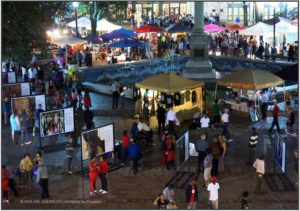 THE RIPPLE EFFECTS
THE RIPPLE EFFECTS
A key outcome of the campaign was the public visibility it gave to the issue. “All of a sudden, the quiet work became public,” Crystal says. After the campaign, Crystal received Florida’s Community Advocate of the Year 2014 award, which she says gave her a bigger platform to raise awareness. She has also created a network of attorneys who represent trafficking survivors in Jacksonville so that when a survivor is identified, they are immediately able to connect to an attorney. The rewards of her efforts from knowing that she is directly impacting the lives of human trafficking survivors, and hopefully helping to prevent trafficking proliferation in the future.
“If all my work reaches only one person, it will be worth it.”
***
Thanks to Crystal Freed and all of our partners for bringing ArtWorks for Freedom to their local communities. Interested in partnering with ArtWorks? Contact us and let’s get started!
